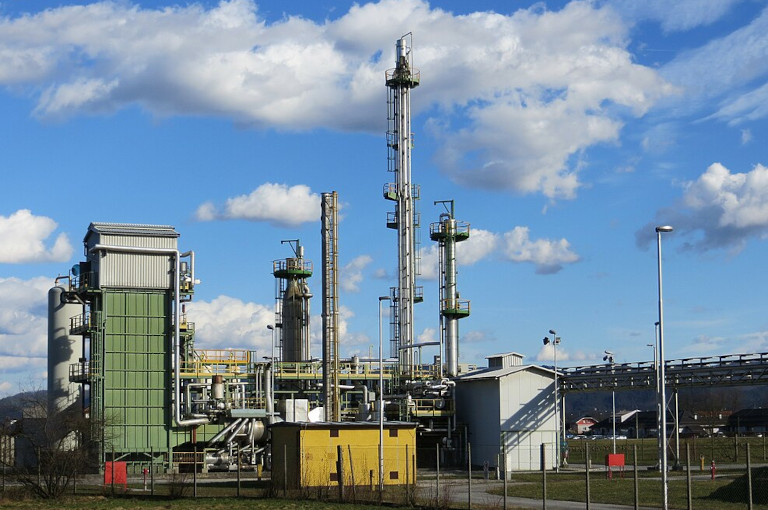Hydrogen is the latest buzz in energy circles, hailed as a cleaner fuel option that emits only water when burned. Yet, recent research suggests that hydrogen and fossil fuels may be more friends than foes. This article delves into the overlaps, environmental impacts, and vested interests paradoxically linking the ‘clean’ hydrogen economy to fossil fuel extraction.
Future Hype and Present Troubles
Government officials and captains of industry on both sides of the Atlantic are going gaga over hydrogen (H2). While the US is mulling over a $10 billion tax credit bill to fund hydrogen production, European Union Member States have already earmarked almost €20 billion in direct aid to private companies developing hydrogen projects. To compare, in Europe, solar and wind respectively received €25 billion and €15 billion in 2022 (a record-breaking year for low-carbon energy subsidies). This profligacy in allocating public funding is justified by projections indicating at least a fivefold increase in hydrogen demand by 2050 to align with most 1.5-2 oC climate scenarios. And while analysts argue that hydrogen alone could contribute to decarbonise 18% of energy systems and meet 22% of final energy demand, questions linger about how exactly it will be deployed at scale.
Hydrogen production is an energy-hungry process. Each stage of the conversion from power (like electricity) to hydrogen and back dissipates energy. Consequently, the round-trip efficiency of green hydrogen – manufactured via electrolysis using low-carbon sources like wind and solar – currently stands at a modest 20-40%. This is substantially lower than alternatives like pumped hydro, compressed air, and flow batteries.
Despite the hype about its potential for decarbonisation, less than 0.1 % of hydrogen is currently used in energy systems. As shown in the image below, nearly half of the roughly 100 Mt of hydrogen consumed globally each year goes into oil refining. Another 30% is consumed to manufacture ammonia-based fertilisers (NH4) for industrial farming. Interestingly, the recent global fertilisers crisis is also tied to hydrogen production. Since most hydrogen (>60%) is produced using methane and water in a process called steam-methane-reforming (SMR), the 2021-2022 surge in natural gas prices caused the price of fertilisers to skyrocket.

Hydrogen economy in 2022. Source: https://doi.org/10.1016/j.eist.2024.100817
The cost of hydrogen is closely tied fossil fuel prices, as 99.9% of it is produced either from natural gas, oil, or coal. Its energy requirements amount to the equivalent of 2 billion barrels of oil per year, roughly comparable to Japan’s final energy consumption. Eliminating current hydrogen uses could spare over 2% of global CO2 emissions annually (900 Mt CO2). Still, this is only part of the picture, because hydrogen production also emits other greenhouse gases (GHGs) along the supply chain, such as methane. Hydrogen from steam-methane-reforming alone uses 6% of world ’s natural gas yearly consumption. Add to this figure methane losses due to leakage rates regularly above 3% during extraction and transportation, and the current ‘hydrogen economy’ emits well over half of Africa’s greenhouse gases emissions.
Industrial Interests
The major challenge facing the hydrogen industry is its dependency on fossil fuels. The answer advanced by oil and gas players is to deploy carbon capture and storage (CCS) technologies. However, scientists have seriously cautioned against the paradoxical outcomes of relying on natural gas to produce ‘blue hydrogen’ (from SMR + CCS), besides the ‘moral hazard’ that doubling down on investments on fossil fuel-related infrastructure like CCS would entail. While the debate on the viability of blue hydrogen continues, undoubtedly this approach would benefit certain segments of the industry.
Gas companies, and particularly transmission system operators, fervently advocate for blue hydrogen and the refurbishment of gas grids to accommodate hydrogen transport. This would save them the embarrassment of operating a gradually emptying network of stranded assets. For instance, this is the position championed by the European Hydrogen Backbone (EHB) initiative, a spin-off of the Gas For Climate coalition. The EHB was launched in the summer of 2020 as a consortium of 32 gas transmission system operators managing most of Europe’s natural gas infrastructure. Their campaign has gained traction, with the idea of a “hydrogen backbone” repeatedly appearing in official European Commission communications. The possibility of repurposing methane infrastructure for hydrogen has been endorsed also by other energy developers, including for approving new liquified natural gas (LNG) terminals in Germany since 2020 as well as the now infamous Nord Stream 2 gas pipeline, connecting Russia to Europe until it was sabotaged in September 2022.
Fossil fuel companies also control existing hydrogen production facilities, which are most often located next to refineries in coastal areas of oil-producing countries. These are usually owned by oil companies for on-site upgrading of oil and its derivatives. Given these industrial dynamics, to which extent does the emerging ‘clean’ hydrogen economy represent a departure from business-as-usual?
Partnerships and Trade Routes
Intellectual property rights over hydrogen technology are predominantly held by automotive, industrial chemicals, and oil and gas industries. The leading patent holders are private corporations like Linde, Air Liquide, Toyota, Shell, ExxonMobil, Chevron, and BASF. Together with other oil and gas majors like Saudi Aramco, ADNOC, Sinopec, and TotalEnergies, these companies (except BASF) are also Steering Members of the Hydrogen Council, an association launched at the 2017 World Economic Forum in Davos to represent global industries shaping the nascent hydrogen economy. In Europe, such lobbying efforts often take the form of public-private partnerships involving European institutions, regional bodies, port authorities, and municipalities. Examples include the European Clean Hydrogen Alliance (the broadest hydrogen network in the world) and Hydrogen Europe. These industrial coalitions wield considerable influence on policymakers, especially when accompanied by promises of multi-billion investments in new hydrogen projects.
Indeed, among the world top twenty low-carbon hydrogen projects under development, the largest one is a public-private partnerships, and eleven of them involve at least one oil and gas company as lead developer. The mining sector too is featured in five of the top ten projects, with the Australian Fortescue Future Industries and its corporate conglomerate leading the charge. Notably, all the largest projects in the Global South focus on exporting hydrogen to high-income countries, risking entrenching their economic policies to the long-term export of low added value commodities. In other words, they would take advantage of weaker labour and environmental standards, instead of developing domestic industrial capacity. These issues have been raised for hydrogen developments in countries like Namibia, Morocco, South Africa, and Argentina.
Moreover, each kg of hydrogen requires 15-20 kg of water at the production site. While this could be addressed by de-salinization projects in coastal areas at an additional energy cost, current practices lack standardized measures to prevent developers from compromising local water resources, especially in arid and semi-arid climates. Nevertheless, the abundant solar radiation of these regions also makes them ideal for green hydrogen production coupled with large-scale solar parks. The growing energy dependency of Europe on African countries is an expression of these trends. So far, low-carbon energies have not challenged the reconfiguration of land and resources for the benefit of core wealthy countries. These trade relationships come with a certain colonial aftertaste, which can be ever more pernicious within an already uneven world market economy.
Moving Forward: What Role for Hydrogen?
In sum, there is broad consensus that hydrogen as an energy carrier represents a suboptimal solution compared to direct electrification. Hydrogen can be reserved as a complementary energy source whenever electrification is technically unfeasible or uneconomical.
This approach only makes sense if hydrogen production itself does not contribute significantly to GHG emissions. Thus, priority should be given to either decarbonise or phase out current hydrogen uses, starting with those related to the oil and gas industry. The second major consumer of hydrogen, the fertiliser industry, can also be challenged on the base that agroecological farming can dispense from its services while providing a host of additional benefits for humanity and the rest of nature.
However, the overlay of private agendas is limiting the array of choices to those that would preserve incumbent corporate power. While solutions exist to mitigate the environmental impact of the hydrogen industry, these will remain out of reach as long as political measures and industrial development do not align with the public interest.





